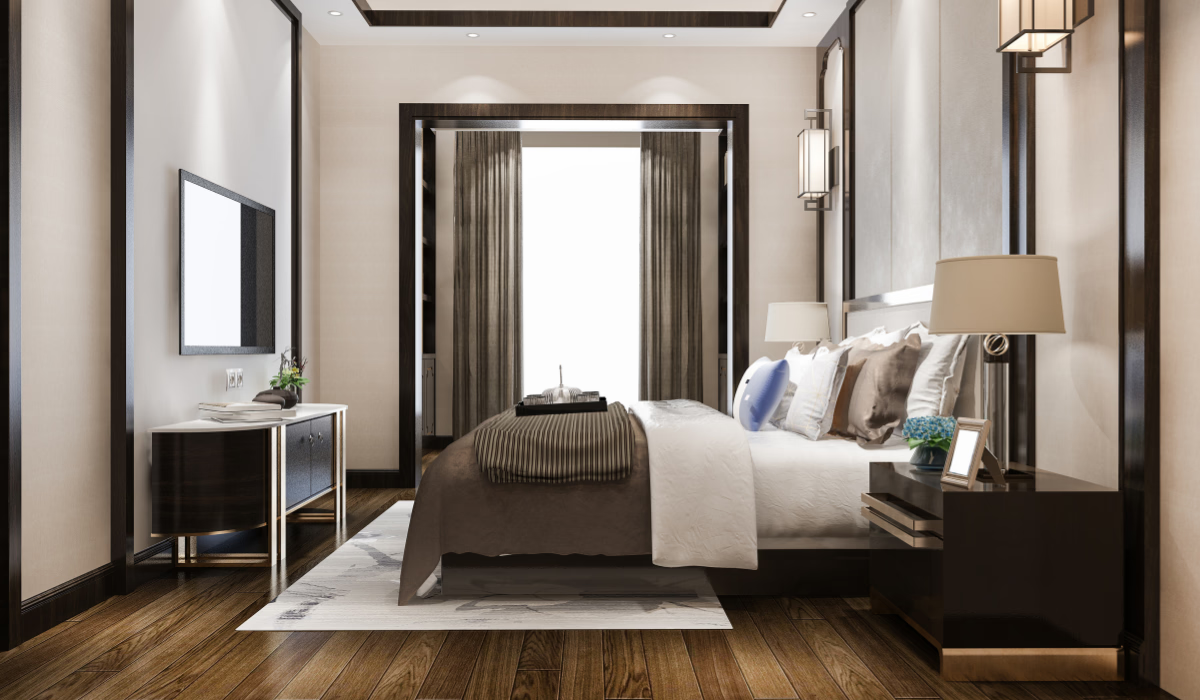A modern master bedroom should be more than just a place to sleep—it should feel like a sanctuary that balances simplicity, style, and comfort. Clean lines, neutral color schemes, and thoughtful furniture can help craft a space that feels both relaxing and contemporary. By combining well-chosen materials, subtle accents, and clever lighting, your master bedroom can become both elegant and calming.
Whether your bedroom is spacious or compact, the key is in selecting decor and layout that support relaxation, clarity, and personal expression without overwhelming the senses.
Key Characteristics of Modern Master Bedroom Decor
Modern master bedroom styling often emphasizes minimal ornamentation and a clean visual flow. Furniture pieces with straightforward silhouettes, smooth surfaces, and moderate scale are preferred. Beds with low profiles, simple headboards, and nightstands that don’t overcrowd the space contribute to a clean, streamlined look.
Natural materials and muted tones are critical to achieving this aesthetic. Wood in soft finishes, metals with matte or brushed textures, and fabrics like linen, cotton or wool help warm up what might otherwise feel too stark. Incorporating texture—through rugs, cushions, or wooden elements—anchors the minimalism in comfort rather than coldness.
Layout & Lighting Strategies
A good layout is essential in a modern master bedroom. The bed should be positioned in a way that allows free movement around it, with easy access to all sides. If possible, avoid placing the bed directly under windows or with the headboard in line with the door. Floating nightstands or wall-mounted units reduce visual bulk and improve flow.
Lighting should be layered: ambient lighting provides uniform light, task lighting (such as bedside lamps) offers functionality, and accent lighting enhances architectural features or textures. Natural light plays a huge role—maximize it through large windows or sheer curtains. Also, consider installing dimmers so you can adjust the mood from bright morning to soft evening.
Material, Color Palettes & Finishes
Neutral color palettes dominate modern bedroom design—think soft whites, light grays, warm beiges, and gentle taupes. These tones help the room feel spacious and serene. Darker accent colors—deep blues, charcoal, or black—can be used sparingly to add contrast, especially in feature walls, upholstered headboards, or decorative trim.
Finishes should lean toward matte or satin rather than high gloss to avoid glare and create a more relaxed feel. Wood grain can be exposed and appreciated, metals kept subtle. Rugs or textiles with low sheen and natural fibers help ground the space, while metallic or glass elements can be used for small accents.
Functional & Aesthetic Additions
Storage that blends into the design is crucial. Built-in wardrobes, floating shelves, and furniture with hidden compartments help keep clutter out of sight. Opt for bedside tables or dressers that complement the bed without overpowering the room. Low or platform beds with storage drawers underneath are helpful when space is limited.
Decorative touches should feel intentional. A large photograph or art piece over the bed, a statement light fixture, or a textured wall panel can act as focal points. Add plants or greenery to breathe life into the space. Soft textiles—throw blankets, plush rugs, layered bedding—bring warmth and tactile comfort.
Common Mistakes to Avoid
One common issue is overcrowding—filling the room with too many accessories, oversized furniture, or mismatched décor. This undermines the clean, calm aesthetic modern design aspires to maintain.
Overusing dark tones or glossy finishes in a poorly lit room can make it feel smaller and more oppressive. Also, choosing furniture or layout based on looks alone without thinking about comfort, ease of movement, or nighttime lighting undermines how livable the space is.
Conclusion
Designing a modern master bedroom is about marrying form and function in a way that brings peace and elegance into your everyday life. With careful attention to layout, quality materials, neutral palettes, and tidy storage, your bedroom can become a serene retreat. Incorporating small accents thoughtfully will make it feel truly personalized without sacrificing the modern simplicity.
FAQs
What furniture pieces are essential in a modern master bedroom?
A low-profile bed, nightstands with minimal ornamentation, and streamlined storage like built-in wardrobes or floating shelves are core pieces. These help maintain openness and function.
How can I make a modern bedroom feel warm rather than cold?
Introduce texture (wood, woven fabrics, rugs), natural elements like plants, and use soft neutral tones. Balance minimalism with accents and lighting that create softness.
Is a dark accent wall good in a modern master bedroom?
Yes, if used carefully. A single wall painted in a deeper hue can add contrast and depth. Ensure there’s enough natural or layered lighting so it doesn’t make the room feel too closed in.
What lighting layout works best in modern bedroom design?
Combine ambient lighting (ceiling or overhead) with task lights (bedside lamps) and accent lighting (recessed lights, wall sconces). Use dimmers so you can create several lighting moods for morning, evening, and relaxing.







